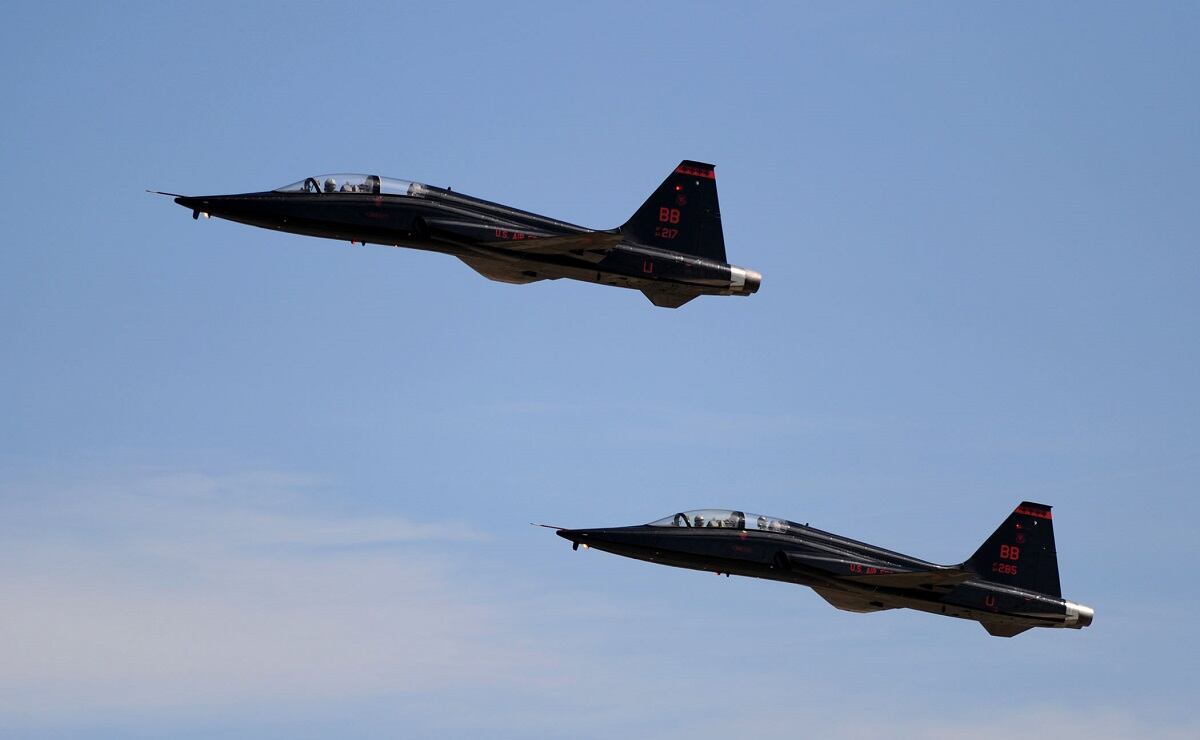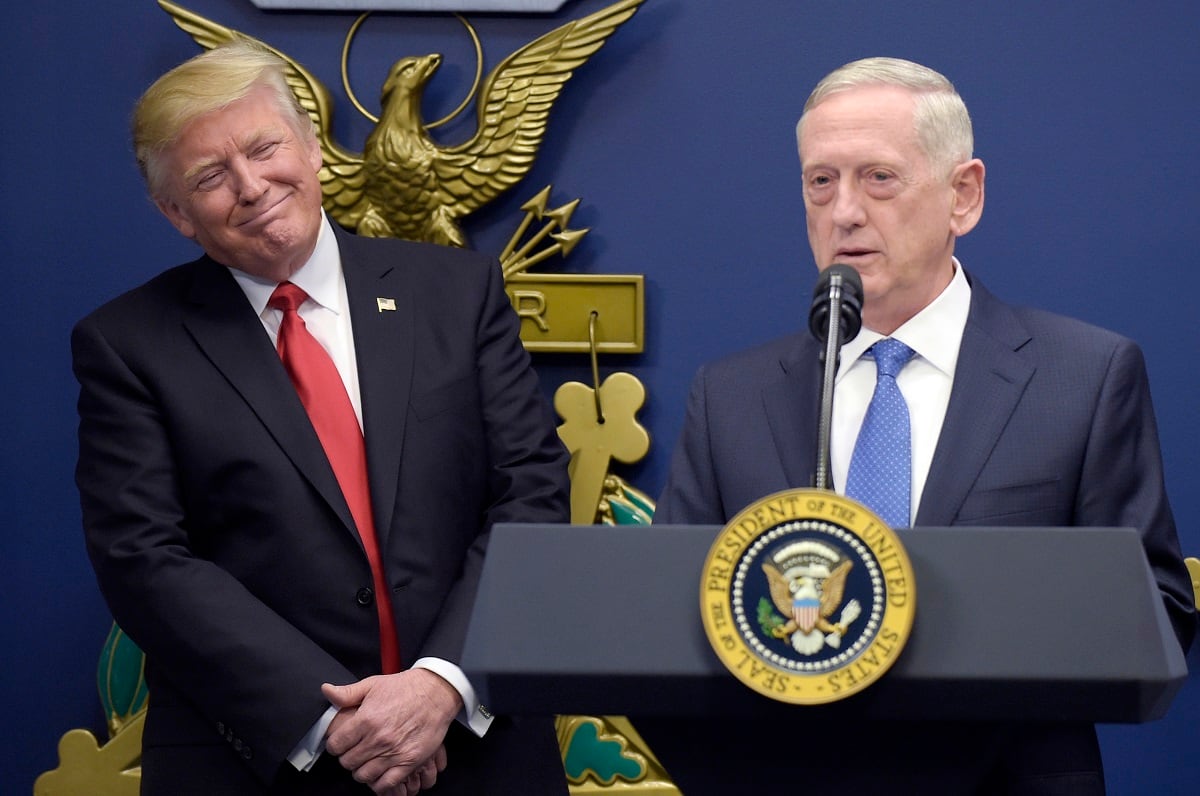WASHINGTON — For years, U.S Air Force leaders have lamented budget constraints that have forced the service to eliminate fighter squadrons, contributed to maintainer and pilot shortfalls, and slow rolled some of its modernization needs.
Critics said the service had only itself to blame, as former leaders opted to discuss the force it could afford and never clearly telegraphed to Congress what it needed. They pointed to the Navy, which established a strong corps of advocates on Capitol Hill, in part, by touting easy-to-remember, aspirational and aggressive goals like a 355-ship fleet.
Now it appears the Air Force is taking a page from the Navy’s book. On Sept. 17, Air Force Secretary Heather Wilson will announce the number of operational squadrons the service believes it needs in order to execute the national defense strategy.
And in an exclusive interview with Defense News, Wilson acknowledged that the number will grow.
“We are too small for what the nation is asking of us,” she said ahead of the Air Force Association’s annual conference, which runs this week from Sept. 17 to 19.
Today, the Air Force has 312 operational squadrons — which includes everything from fighters, bombers, tankers and combat rescue as well as space, intercontinental ballistic missile and cyber squadrons.
“The reason the Air Force exists is those operational squadrons that create combat effects, and it makes sense to us to talk about what that looks like,” she said. “This is really what matters in the national defense strategy.”
In a speech at the Defense News Conference on Sept. 7, Wilson blamed mandatory budget cuts for forcing the service to downsize even though it remained “in continuous combat operations” in Afghanistan and other theaters. The number of fighter squadrons, for example, has dwindled from 134 during Desert Storm in 1991 to a mere 55 squadrons.
Wilson wouldn’t disclose how many operational squadrons the Air Force believes it needs or what kinds of squadrons could see the biggest growth in numbers, preferring to save the big reveal for the conference. But she did confirm that the level of missile and tactical airlift squadrons would likely stay the same.
That leaves the door open for a growing number of fighter squadrons, refueling squadrons and bomber squadrons — which, in turn, could necessitate more planes and thus a growth in the number of F-35 Joint Strike Fighters, B-21 bombers and KC-46 tankers that the Air Force plans to buy.
Rebecca Grant, an aerospace analyst at IRIS Independent Research, projected that the Air Force’s analysis would show a requirement for more fighter squadrons — particularly for fifth-generation platforms with radar-evading stealth and advanced computing systems. Those capabilities could prove to be vital in a contest with Russia and China, which are making investments into missiles, electronic warfare and unmanned systems that could challenge fourth-generation planes.
“This is not a short-term fix,” she said. “I would like to see a lot more F-35 squadrons. I would like to see a plan for a very robust number of bomber squadrons. They’ll need the B-21 to fill that out, but it needs to be a robust plan.”
“The fact of the matter is that the Air Force is under-resourced in every mission area that it has,” said David Deptula, a retired Air Force lieutenant general and currently the dean of the Mitchell Institute for Aerospace Studies.
Deptula argued that the service needs to nearly double its B-21 program of record from 100 to 180 planes, and buy F-35s at a much faster procurement rate of at least 80 jets per year. He also pointed to the age of T-38s used to train tactical aviators; they will be replaced by new T-X jets over the next decade.
RELATED

When the Air Force’s target is revealed, another interesting element will be whether there are changes to the number of cyber and drone squadrons, which could reveal the service’s commitment to two areas that are often touted by Air Force leaders as critical for its future success.
Air Force leaders will also likely need to pay attention to the way they telegraph the level of space-focused squadrons, given President Donald Trump’s announcement to create a Space Force. Does the Air Force take the creation of a Space Force as a given, stripping out all or many of its space squadrons from its plan? Or does it argue for an increased number of space squadrons — a ploy that could show the service putting a greater emphasis on the domain, but also risks the appearance of daylight between Air Force leaders and Trump?
RELATED

One of the major questions about the creation of a Space Force is whether the Air Force will be allowed to retain any of its existing capability, but Deptula argued that the service should make the case that much of the air-breathing arm of the Air Force relies on space.
“A perfect example is precision-delivered muntions like GPS-guided weaponry,” he said. “Are you going to take all of those [GPS-related] squadrons and functions and move them out of the Air Force into the Space Force?”
Grant, who has also been critical of a separate Space Force, would like to see the Air Force present new ideas for how to organize its space assets. “I don’t’ know if you can apply the Air Force squadron tailcount to the space force,” she said. “It would be nice to see the Air Force put that forward, regardless if they end up keeping the Space Force or not.”
Will Congress bite?
To arrive at the number of squadrons the Air Force needs, leaders took the assumptions in the National Defense Strategy — namely that the U.S. military needs to prepare for war with near-peer adversaries, while at the same time expending the resources needed to protect the U.S. at home and battle terrorism abroad — and ran a series of war games and exercises set in the 2025-2030 time frame, Wilson said.
All other variables, like the composition of a squadron and concepts of operations, stayed the same.
RELATED

The results showed that the Air Force needs more operational squadrons than it has. But leaders might already be soft-pedaling the impact of its analysis on future plans.
Asked whether the end strength and procurement figures in the fiscal 2020 budget will reflect the Air Force’s new squadron target, Wilson acknowledged that financial constraints are unlikely to disappear overnight and that the service will have to continue to be pragmatic about spending — perhaps signaling that future budgets will continue to reflect only modest, incremental growth.
“We always have to take into account financial realities,” Wilson said.
Nevertheless, she hopes the number gives the Air Force a goal that it can work toward in the long term.
“When the Congress or anyone asks us: ‘All right, you’ve got a defense strategy, what does it take to implement it?’ We should have that answer,” she said. “We shouldn’t just be going year to year saying, ‘Here is our top line, and here’s how we would do it,’ because the difference between where we are and where we need to be to execute a national defense strategy represents risk.
“We’ve been asked to defend the homeland and be able to confront either China or Russia. What would that mean if you don’t have enough to do both? Where would you make the compromises?”
But Congress must understand the Air Force cannot go on much longer under such compromises, Deptula said.
“Talking about it is the only way to get attention,” he said. “All of the services to a degree need to recapitalize their force structure in order to meet the needs of the National Security Strategy. It’s not an arbitrary: ‘Hey, we’ve got to get bigger, and we need more money.’ ”
And if Congress doesn’t get the message?
“The nation runs the risk of being unprepared in the next major regional contingency, and we’ll have to recuperate from a loss,” Deptula said. “That’s a hell of a way to do business.”
Valerie Insinna is Defense News' air warfare reporter. She previously worked the Navy/congressional beats for Defense Daily, which followed almost three years as a staff writer for National Defense Magazine. Prior to that, she worked as an editorial assistant for the Tokyo Shimbun’s Washington bureau.





